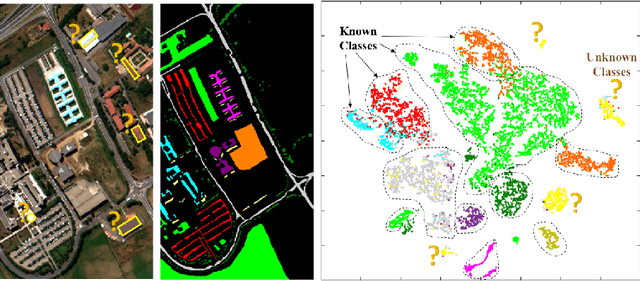Craig Stutts
Representative-Discriminative Learning for Open-set Land Cover Classification of Satellite Imagery
Jul 21, 2020



Abstract:Land cover classification of satellite imagery is an important step toward analyzing the Earth's surface. Existing models assume a closed-set setting where both the training and testing classes belong to the same label set. However, due to the unique characteristics of satellite imagery with an extremely vast area of versatile cover materials, the training data are bound to be non-representative. In this paper, we study the problem of open-set land cover classification that identifies the samples belonging to unknown classes during testing, while maintaining performance on known classes. Although inherently a classification problem, both representative and discriminative aspects of data need to be exploited in order to better distinguish unknown classes from known. We propose a representative-discriminative open-set recognition (RDOSR) framework, which 1) projects data from the raw image space to the embedding feature space that facilitates differentiating similar classes, and further 2) enhances both the representative and discriminative capacity through transformation to a so-called abundance space. Experiments on multiple satellite benchmarks demonstrate the effectiveness of the proposed method. We also show the generality of the proposed approach by achieving promising results on open-set classification tasks using RGB images.
 Add to Chrome
Add to Chrome Add to Firefox
Add to Firefox Add to Edge
Add to Edge